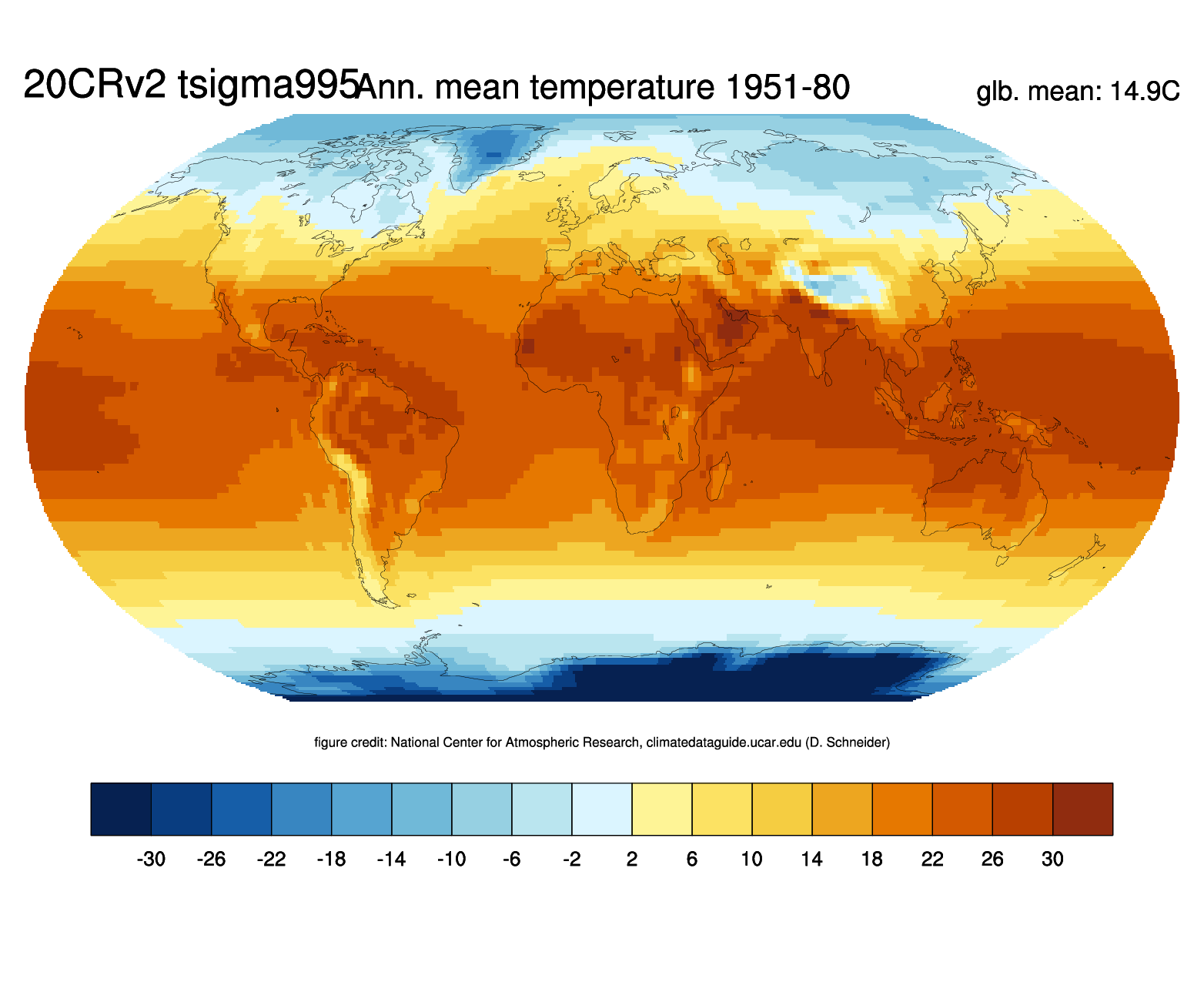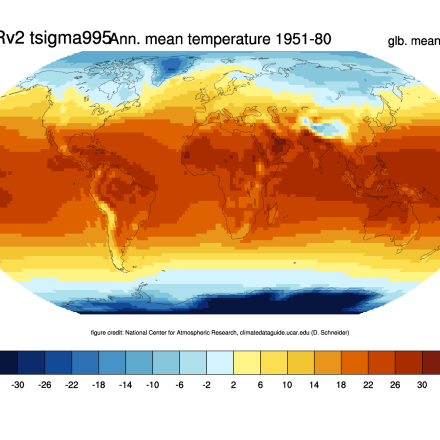NOAA 20th-Century Reanalysis, Version 2 and 2c

The Twentieth Century Reanalysis (20CR) provides a comprehensive global atmospheric circulation data set spanning 1850-2014. Its chief motivation is to provide an observational validation data set, with quantified uncertainties, for assessing climate model simulations of the 20th century, with emphasis on the statistics of daily weather. The analyses are generated by assimilating only surface pressures and using monthly SST and sea ice distributions as boundary conditions within a 'deterministic' Ensemble Kalman Filter (EKF). A unique feature of the 20CR is that estimates of uncertainty are derived using a 56 member ensemble. Overall, the quality is approximately that of current three-day NWP forecasts.
20th Century Reanalysis Version v2c uses the same model as version 2 with new sea ice boundary conditions from the COBE-SST2 (Hirahara et al. 2014), new pentad Simple Ocean Data Assimilation with sparse input (SODAsi.2) sea surface temperature fields, and additional observations from ISPD version 3.2.9.
As of 2020, NOAA has released 20CRv3, which covers the period 1806-2015. More information about 20CRv3 will be added to the Climate Data Guide soon.
Key Strengths
Key Limitations
- NOAA ESRL version 2c; netCDF timeseries files of single variables; sub-daily and monthly means
- NOAA ESRL version 2; netCDF timeseries files of single variables; sub-daily and monthly means
- NCAR Research Data Archive; version 2c
- NCAR Research Data Archive; version 2
- Reanalyses.org, with links to plotting tools
- NOAA ERSL, 20CR version 3 homepage
Cite this page
Acknowledgement of any material taken from or knowledge gained from this page is appreciated:
National Center for Atmospheric Research Staff (Eds). Last modified "The Climate Data Guide: NOAA 20th-Century Reanalysis, Version 2 and 2c.” Retrieved from https://climatedataguide.ucar.edu/climate-data/noaa-20th-century-reanalysis-version-2-and-2c on 2025-12-27.
Citation of datasets is separate and should be done according to the data providers' instructions. If known to us, data citation instructions are given in the Data Access section, above.
Acknowledgement of the Climate Data Guide project is also appreciated:
Schneider, D. P., C. Deser, J. Fasullo, and K. E. Trenberth, 2013: Climate Data Guide Spurs Discovery and Understanding. Eos Trans. AGU, 94, 121–122, https://doi.org/10.1002/2013eo130001
Key Figures
Other Information
- Compo, G.P. & coauthors, 2011: The Twentieth Century Reanalysis Project. Quarterly J. Roy. Meteorol. Soc., 137, 1-28. DOI: 10.1002/qj.776.
- Compo, G.P., J.S. Whitaker, and P.D. Sardeshmukh, 2006: Feasibility of a 100 year reanalysis using only surface pressure data. Bull. Amer. Met. Soc., 87, 175-190.
- Whitaker, J.S., G.P.Compo, X. Wei, and T.M. Hamill, 2004: Reanalysis without radiosondes using ensemble data assimilation. Mon. Wea. Rev., 132, 1190-1200.
- Krueger, Oliver, Frederik Schenk, Frauke Feser, Ralf Weisse, 2013: Inconsistencies between Long-Term Trends in Storminess Derived from the 20CR Reanalysis and Observations. J. Climate, 26, 868–874.
- Compo, G.P., P.D. Sardeshmukh, J.S. Whitaker, P.D. Jones, P. Brohan, and C. McColl, 2013: Independent confirmation of global land warming without the use of station temperatures. Geophys. Res. Lett., 40, 12, 3170-3174
- Slivinski, L. C., and Coauthors, 2019: Towards a more reliable historical reanalysis: Improvements for version 3 of the Twentieth Century Reanalysis system. Quarterly Journal of the Royal Meteorological Society, 145, 2876–2908.
